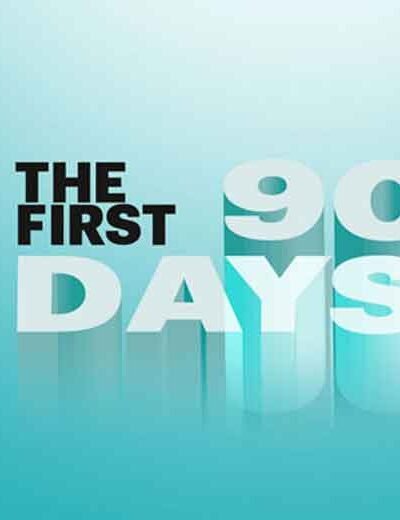 The first three months in a foreign country dictate everything that comes after. Are you going to get settled and find yourself naturally cruising by month six? Or are you going to be frustrated with things that could’ve easily been established in the early going and wind up struggling for the duration of your stay? The first three months blend excitement with a need to understand systems that run contrary to what you inherently know, build a life from scratch and prove your worth at work while juggling everything foreign all at once.
The first three months in a foreign country dictate everything that comes after. Are you going to get settled and find yourself naturally cruising by month six? Or are you going to be frustrated with things that could’ve easily been established in the early going and wind up struggling for the duration of your stay? The first three months blend excitement with a need to understand systems that run contrary to what you inherently know, build a life from scratch and prove your worth at work while juggling everything foreign all at once.
Getting the Boring Stuff Out of the Way
Before impressing anyone at work, life administration comes first. Banking, housing, healthcare, transportation, phone service – none of it is particularly enjoyable but it keeps the rest of life from being an ongoing headache.
Opening a bank account requires an address and employment documents. Some banks cater towards foreign professionals so this step isn’t as daunting as one might think. But without local banking, life becomes complicated – paying rent, receiving salary, phone plans – living for an extended period with constant foreign transaction fees becomes unnecessary.
Housing needs to be arranged quickly out of necessity. This means understanding what rental regulations exist in this new area, what leases look like and which neighborhoods actually meet one’s standards and budget. Doing too much research can lead someone away from a place they think they could never stand as they just needed to fill a void quickly. That commute that looked easy from the train app really presents itself differently when you’re doing it every day.
Healthcare is different across the world and taking the time to figure out how to access it before needing it makes sense. Where can you go for regular checkups versus emergencies? Which insurance does what? How do prescriptions even work? Unless you want to run around like an idiot when you’re ill, you’d best be prepared in advance.
Understanding Work Authorization
Work authorization is vital but what’s even more shocking is the realities of keeping it valid and knowing everything you need to do to avoid pitfalls later down the line. What are the terms? What are the requirements that are easy to overlook? When do they renew? Singapore’s system is thorough but details emerge in daily interactions – the epass is tied to an employer, not providing general adjustments if you change jobs, change salaries or change positions mid-requirement.
Anyone working in Singapore should understand how epass singapore works for them on a day-to-day basis as opposed to whatever the standard suggests. For example, switching jobs might require another epass application or at least an inquiry into how the government should perceive the transition. Likewise, if you receive a significant raise, this gets noted; however, doing something as seemingly innocuous as altering your job responsibilities could render you noncompliant. Avoiding simple mistakes means avoiding intricate problems. Compliance is simple so long as you know compliance is necessary.
The employer handles much of the pass-related paperwork but being in the loop about what you might be responsible for is also key. When is it due for renewal? What do you need to do? How does your job path impact your epass status? Note all these details before taking action in your new role.
Getting to Know Your New Workplace
Starting a new job in familiar territory is challenging enough. Starting in a new country multiplies it tenfold. Not only do you have to learn the intricacies of your position for yourself but now you’re operating in a new workplace culture more complex than anticipated where people are trying to figure YOU out also.
Cross cultural communication takes on new meaning. What’s considered direct versus rude? Formal versus too casual? Confident versus aggressive? Boundaries sit in different places and without taking the time to observe how colleagues talk amongst themselves saves you from unnecessary blunders if you presume your home norms apply here.
Moreover, people will like YOU more if YOU put in the effort to get to know them rather than assuming how things will play out based on familiarity in your last job. Genuine inquiries into how things work, additional questions that imply a desire to learn what’s expected instead of jumping headfirst in… you’ll grow credibility far quicker than immediately trying to implement your status quo from back home.
The first 90 days should be about learning and establishing competence before seeking to explore unknown territories for change. Even if the opportunity exists for transformation upon hire, understanding how things are currently done – and why – provides substance and clarity before lamenting their insignificance and proposing other options. Getting a few small wins showcases competence that recommends your thoughts about bigger ideas down the road.
Actually Living There, Not Just Working
Working successfully abroad requires success outside of work. The first 90 days foster these connections through establishing relevant day-to-day patterns.
Where do you shop for groceries? What’s available? What are the general costs? Which restaurants/cafes will become staples? These intricacies matter less about touristy expectations and more about assimilation; no one wants to feel like they’re on holiday for three years.
Social connections become even more active efforts when moving abroad. Whether you join social clubs based upon interests or professional groups or sporting events – wherever you find yourself learning more about yourself outside work, make those connections there. Expat communities welcome newcomers looking for established social groups; however, it’s recommended that you mix and mingle with locals so you don’t separate yourself from REAL integration.
Exploring your neighbourhood and city takes practice. Where do you buy what? What’s weekend activity worthy? How does transportation truly function? All these minor details come with experience – but the first 90 days support this because you’re still in awe about what’s around you.
Getting Your Finances Sorted
Clearing finances during this period means life gets complicated for no reason later down the line. How do taxes work? Does this country expect quarterly filings for foreign workers? Does this country expect annual filings? Tax treaties emerge so that income gets taxed appropriately; however, when it’s done incorrectly, it complicates life tenfold after efforts supposedly went right.
Setting up a situation where bills get paid promptly, bank accounts exist in different currencies (if needed back home still) and loans potentially exist either way helps YOU determine what your means are relative to income earned here.
Currency conversion can suggest wealth or financial struggles; understand what’s worth it now compared to then.
Understanding saving options exists once you’re established; learning what’s best down the line means speaking with international financial professionals who are licensed to give you guidance based on your personal circumstances.
When Stuff Goes Wrong
Stuff happens that can’t be avoided – assuming everything’s perfect during those first 90 days is unrealistic! Instead, what’s important is acknowledging instances when challenges arise.
Workplace challenges about expectations; management styles wholly different from what you’ve known; subpar realities; housing connections may be made sooner than later but it’s important to bring these up quickly rather than living uncomfortably for three months because you’ve read articles or heard anecdotes from similar situations where people just gave up too soon. They struggled – they weren’t ineffective prior and if time presents otherwise, use it!
Stuff goes wrong; deal with it promptly before it spirals. If there are issues with work authorization paperwork brought improperly into question – but everything else should be valid – assume good faith! But give the benefit of the doubt early on; if housing sucks – it sucks, start looking early instead of waiting three more weeks because it’s uncomfortable! If you’re not meeting people quickly enough – try new methods instead of relying on one method.
Setting Yourself Up for the Long Haul
The first 90 days establish patterns that stick; if you’ve made it functional living by day 90 through no fault of your own – it probably should’ve never been long-term to begin with! Use these 90 days as periodical segues into smoother existence months down the line – as long as you’ve settled up necessary actions administratively, professionally and personally without extensive stressers.
This doesn’t mean life needs to be perfect come day 90 – but systems operate successfully – you know what’s expected – you understand who’s who – you have a rapport with significant others – or at least superficial acknowledgments – but there’s no way after 90 days someone feels comfortable thinking they’ll still feel comfortable at day 90, much less day 400!
Differences emerge between those who make relocation effectively and those who don’t; these initial months take careful deliberation over those who just hope it’ll magically work out! Stay organized! Ask for help! Meet people! Integrate! Don’t assume international relocations will work out just by being! They take as much effort as familiar situations if you want them to.





Leave a Reply